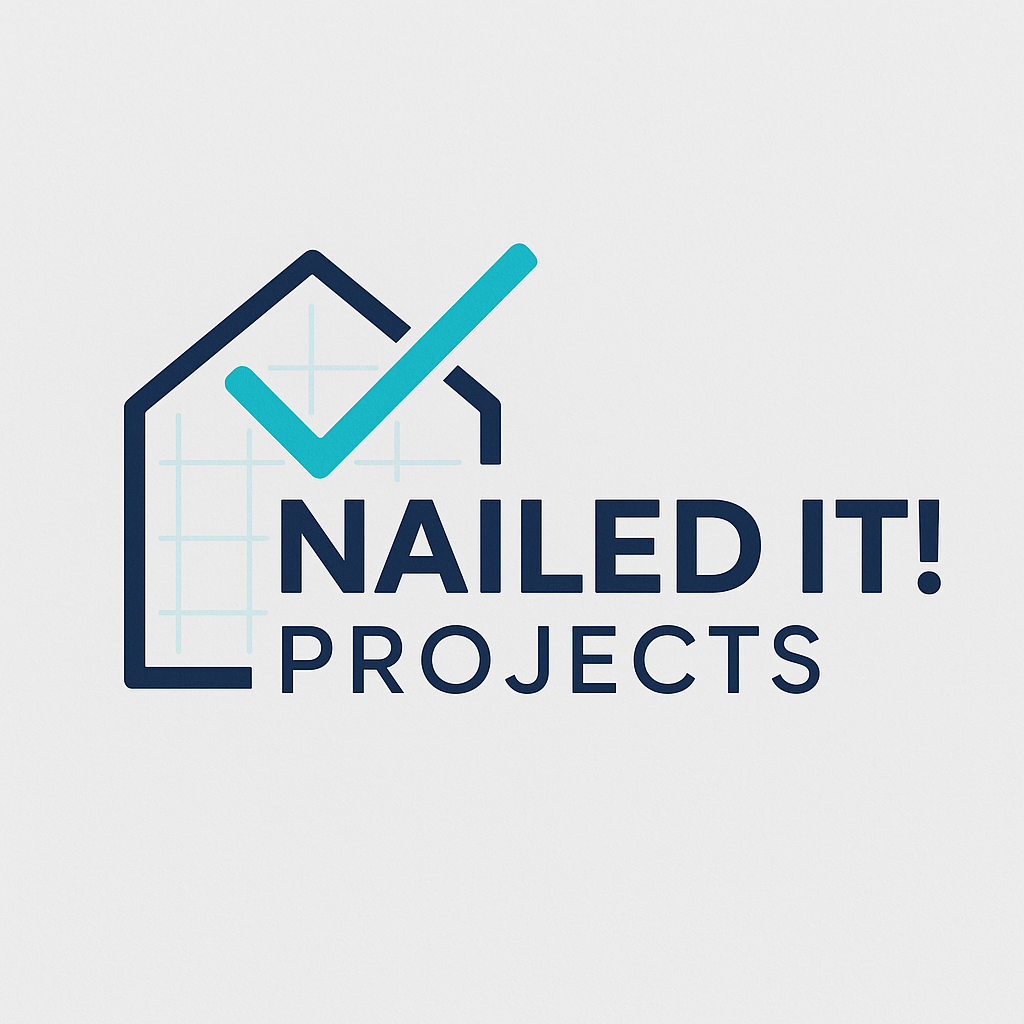Client Project Gallery
Explore a selection of our data-driven project plans. Each dashboard is tailored to provide clients and contractors with the clarity, organization, and detailed analysis needed for a successful build.
Eden Roc Development
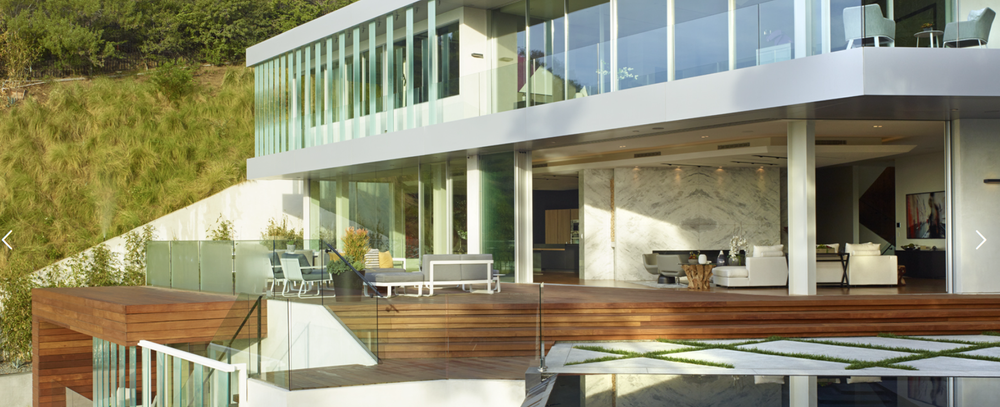

A comprehensive dashboard for a 10-unit development, offering tiered renovation packages (Luxurious, Upscale, and Affordable) with detailed cost analysis, interactive vendor directories, and comparative project timelines.
View Project DashboardVenice Coastal Sanctuary
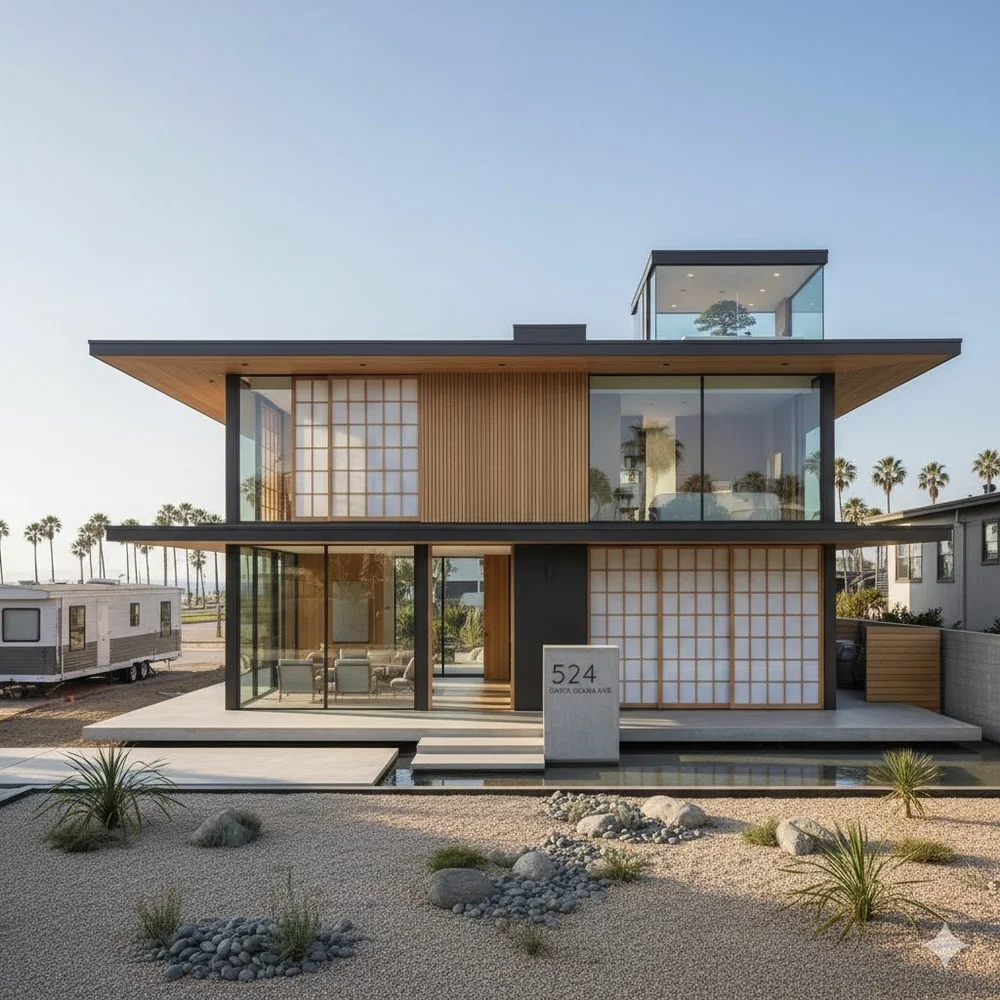
A visionary plan for a full tear-down and rebuild. This dashboard compares two distinct architectural concepts—a Japanese Villa and a Scandinavian Retreat—built upon a high-performance foundation of smart, sustainable systems.
View Project DashboardJapanese-Inspired Residence

This project refines an ambitious student design into a practical, buildable plan. The dashboard focuses on adapting the core concepts—a central water garden atrium and a rooftop oasis—with detailed cost analysis and a realistic construction timeline.
View Project DashboardVenice Prefab Concept
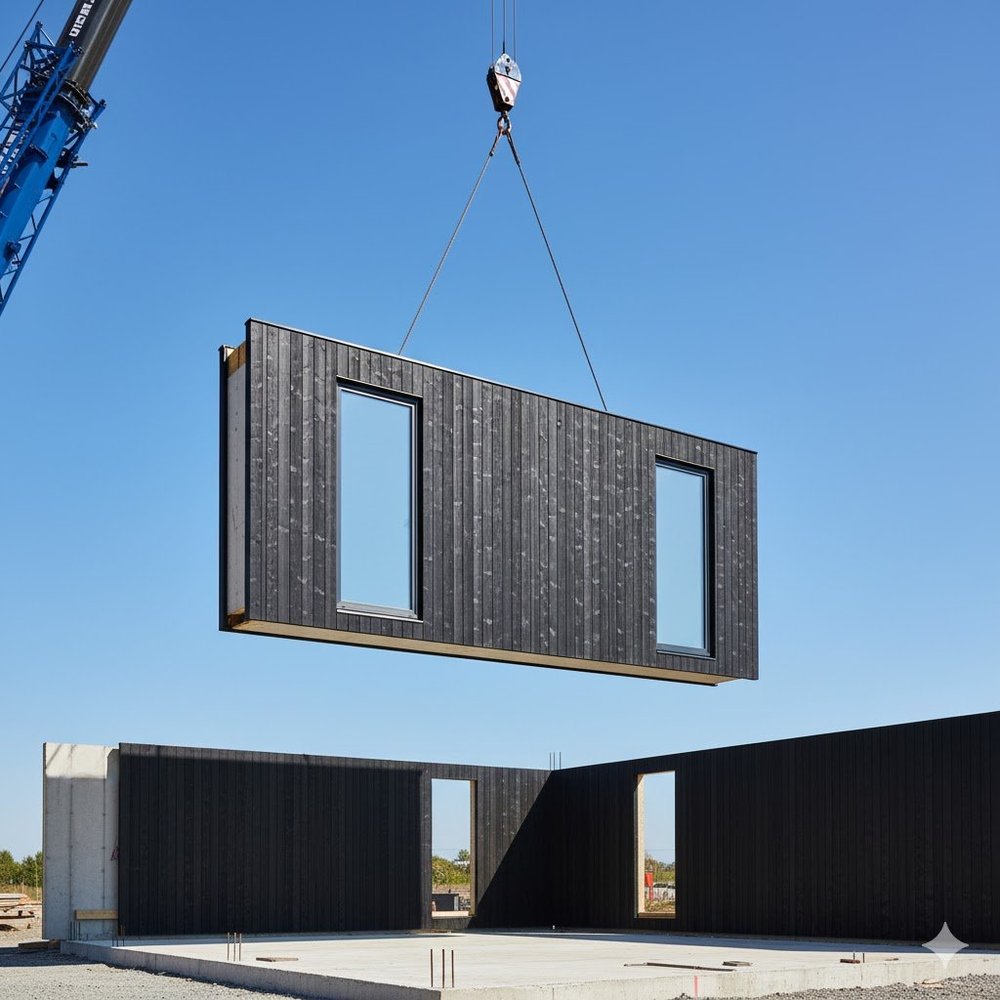
A feasibility study addressing a budgetary target of under $2 million by pivoting from traditional site-built construction to a high-end prefabricated approach, preserving the core design of a serene, Japanese-inspired sanctuary.
View Project DashboardBali Villa Plumbing Installation
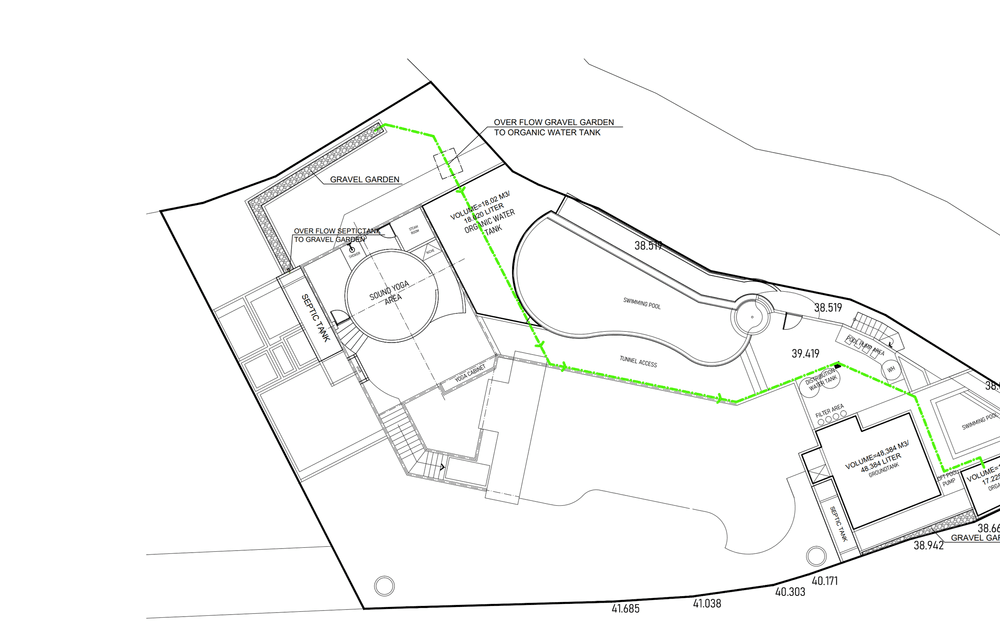
A detailed proposal for a complete Mechanical, Electrical, and Plumbing (MEP) system for a new villa, focusing on sustainable water management including clean water distribution, wastewater treatment, and greywater recycling for irrigation.
View Project DashboardProject Dashboard: Sam Villa


A detailed project dashboard for a modern tropical villa with a private garden pool in Bali, combining design vision, cost analysis, vendor directory, and a date-specific construction timeline.
View Project DashboardProject Dashboard: Eden Roc
Los Angeles, CA
Project Summary
This project involves the interior finishing of a 10-unit small lot subdivision in Los Angeles. To accommodate various market segments and budget constraints, three distinct tiers of renovation packages have been proposed: Luxurious, Upscale, and Affordable. Each package offers a curated selection of materials and brands for flooring, appliances, countertops, cabinetry, and fixtures. This interactive dashboard provides all necessary details to compare these packages, find qualified vendors and contractors, and manage the project timeline effectively.
Package Comparison at a Glance
| Finish Category | Luxurious Package (High-End) | Upscale Package (Mid-Market) | Affordable Package (Value-Conscious) |
|---|---|---|---|
| Flooring | Reclaimed Hardwood / Wide-Plank White Oak ($15–$25/sq ft) | Engineered Hardwood ($8–$14/sq ft) | Laminate / Luxury Vinyl Plank ($4–$7/sq ft) |
| Appliances | Sub-Zero, Wolf, Miele (>$25,000 package) | Thermador, Dacor, Jenn-Air ($10,000–$20,000 package) | GE, Whirlpool, KitchenAid ($4,000–$8,000 package) |
| Countertops | Caesarstone / High-End Quartzite ($100–$200/sq ft) | Pental Quartz / Mid-Grade Granite ($70–$100/sq ft) | Formica / Entry-Level Quartz ($50–$70/sq ft) |
| Cabinetry | Fully Custom ($25,000+) | Semi-Custom ($15,000–$25,000) | Stock / RTA ($8,000–$12,000) |
| Plumbing Fixtures | Kohler Purist, Brizo ($300–$600+ per faucet) | Delta, Moen ($150–$300 per faucet) | Builder-Grade Options (<$150 per faucet) |
| Lighting | Designer Pendants, Smart Recessed Lighting | Quality Brand Pendants, Dimmable LEDs | Standard Fixtures, Basic LED Recessed Lights |
Cost Analysis per Unit
Below are the total estimated costs per unit for each renovation package. The chart further below visualizes how these totals break down across the main spending categories. This allows for a quick comparison of the overall investment required for each tier while also providing a detailed view of where the costs are allocated. For more granular pricing, refer to the "Advertised Rates" and "Notes" columns in the Vendor & Contractor Directory.
Affordable Total
$0k
Upscale Total
$0k
Luxurious Total
$0k
Vendor & Contractor Directory
This directory provides contact information for potential material vendors and installation contractors in the Los Angeles area, categorized by their specialty and the package tier they are best suited for. Use the filters below to narrow down the list to find the right partners for procurement and execution. This resource is designed to make it easy for the general contractor to quickly contact and vet potential suppliers and tradespeople.
Project Timelines & Gantt Charts
Below are two projected timelines for the interior finishing phase. The original 14-week schedule allows for more buffer time between trades. The new 7-week "Fast-Track" sequence, based on the additional research provided, outlines a more aggressive, optimized schedule. Comparing these options allows for a strategic decision based on project urgency and risk tolerance.
Original Timeline (14-Week Sequence)
Fast-Track Timeline (7-Week Sequence)
This optimized schedule assumes a one-week startup for procurement and permitting, followed by consecutive, back-to-back tasks with minimal delay. This aggressive timeline could significantly reduce carrying costs but requires precise coordination of all trades.
Project Dashboard: Venice Coastal Sanctuary
A Vision for a Modern Coastal Sanctuary in Venice, California
Project Vision & Overview
This project entails the full tear-down and rebuild of a single-family home in Venice. The vision is to create a landmark residence that is not just a statement of luxury, but a fully integrated living system—deeply connected to its coastal environment, responsive to its inhabitants' well-being, and resilient for the future.
The new 3,500–4,000 sq ft, two-story residence will be built on a slab foundation and feature premium amenities, including an internal elevator and a third-level rooftop deck with a hot spa and an enclosed home office. A key logistical component is the on-site placement of a 400 sq ft mobile home for temporary residence during construction, which will later be relocated or sold.
This dashboard explores two distinct architectural pathways—one inspired by Japanese minimalism, the other by Scandinavian warmth—built upon a non-negotiable foundation of high-performance systems that ensure the home is intelligent, healthy, and self-sufficient.

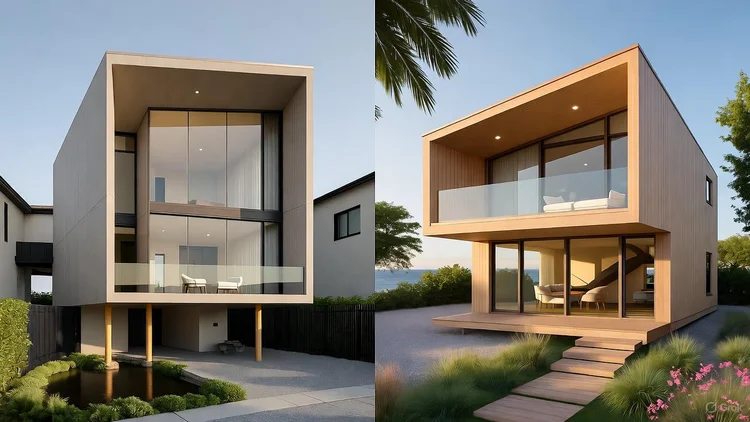
Foundational Pillars of a Modern Sanctuary
This section details the core technological and sustainable systems that will serve as the high-performance chassis for the home, regardless of the final design direction. These pillars ensure the residence is not just beautiful, but intelligent, healthy, and self-sufficient.
1. The Intelligent Home: Energy & Automation
Bioclimatic & Passive Solar Design: The home's form and orientation will be its first line of energy efficiency. By orienting the longer axis east-west, we maximize southern exposure to capture low winter sun for heating while using overhangs to block high summer sun, reducing energy needs by up to 40%.
Active Energy Generation & Storage: A seamlessly integrated photovoltaic (PV) solar array paired with an advanced battery storage system will provide energy independence and resilience, ensuring uninterrupted power during grid outages and enabling a "net-zero" energy profile.
Home Energy Management System (HEMS): A central HEMS will act as the home's digital brain, optimizing energy flow by shifting loads like EV charging or pool pumps to times of peak solar production or low utility rates.
Unified Home Automation: A single, intuitive interface (e.g., Crestron, Savant) will provide effortless control over lighting, climate, security, and AV systems, ensuring technology enhances, rather than complicates, the living experience.
2. The Wellness Ecosystem: Air, Light & Water
Medical-Grade Air Quality: A whole-home, hospital-grade air purification system (e.g., Lennox PureAir™ S) will be integrated into the HVAC to combat particulates, bioaerosols, and VOCs, ensuring a haven of clean air.
Circadian Rhythm Lighting: A tunable white LED lighting system will automatically adjust its color temperature throughout the day—from cool, energizing light at midday to warm, relaxing light in the evening—to support natural sleep-wake cycles and improve well-being.
Comprehensive Water Stewardship: A greywater recycling system will capture water from showers and laundry, treat it, and reuse it for landscape irrigation, reducing potable water consumption by up to 45% and saving thousands of gallons annually.
3. The Resilient Envelope: Materials & Certification
Coastal-Grade Materials: The exterior will feature materials chosen for resilience in a marine environment, such as advanced bamboo-polymer composites, which resist saltwater corrosion, UV radiation, and pests.
Targeting LEED Gold Certification: The project will pursue LEED Gold certification, a globally recognized mark of quality. This strategy provides a direct financial benefit via a 40% discount on California Coastal Commission permit fees, reduces long-term operating costs, and enhances the property's asset value.
Two Paths to Perfection: A Comparative Analysis
With the high-performance foundation established, we present two distinct aesthetic directions. Each leverages the same core systems but interprets them through a unique cultural and design lens.
Comparative Overview
| Feature | Concept A: The Japanese Villa | Concept B: The Scandinavian Retreat |
|---|---|---|
| Aesthetic Philosophy | Wabi-Sabi & Shakkei: Embracing natural imperfection, tranquility, and "borrowed scenery." Focus on harmony and contemplation. | Hygge & Lagom: Prioritizing coziness, functional simplicity, and balanced living. Focus on light and comfort. |
| Material Palette | Dark-stained wood (Shou Sugi Ban), local stone, bamboo, raw concrete, blackened steel accents. | Light-toned woods (white oak, ash), pale stone, polished concrete, brushed nickel accents, extensive clear glass. |
| Light & Shadow | Emphasis on filtered, indirect light and the artistic interplay of light and shadow to create mood. | Emphasis on maximizing and celebrating natural light with large windows, skylights, and a bright, reflective palette. |
| Landscape Philosophy | A curated, contemplative Zen garden using California natives to evoke a Japanese aesthetic. | A naturalistic, soft coastal meadow using California native grasses and wildflowers. |
Concept A — The Japanese Villa: Serenity and Wabi-Sabi
This design creates a sanctuary of profound calm. The architecture is characterized by strong horizontal lines, deep roof overhangs, and a palette that celebrates the authenticity of natural materials. Spaces flow into one another, defined by translucent screens and subtle level changes, crafting a home that feels grounded, timeless, and deeply connected to its landscape.


Landscape Plan: The California Zen Garden
A modern, drought-tolerant interpretation of a traditional Japanese garden. Instead of high-water maples, we will use sculptural California natives like Manzanita or Toyon. A dry riverbed of raked gravel(karesansui) and carefully placed boulders will create a minimalist, contemplative outdoor room.
Concept B — The Scandinavian Retreat: Radiance and Hygge
A celebration of light, space, and functional warmth. The architecture features clean lines, possibly a pitched roofline creating dramatic, light-filled interior volumes. Vast expanses of glass capture coastal light, while the interior is defined by a light, neutral palette, natural wood floors, and comfortable furnishings—the essence of hygge.
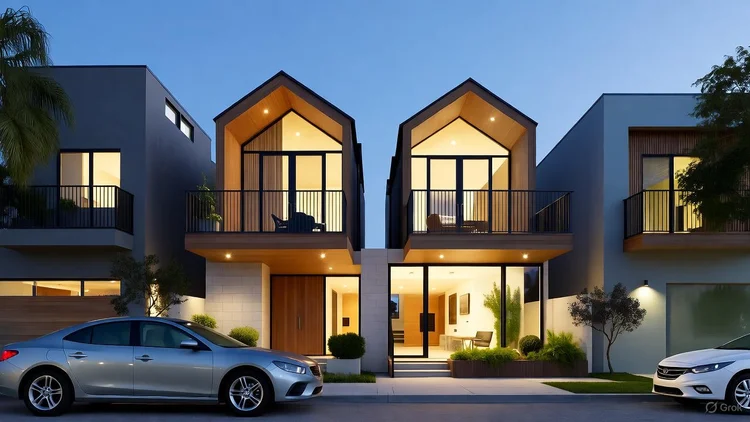
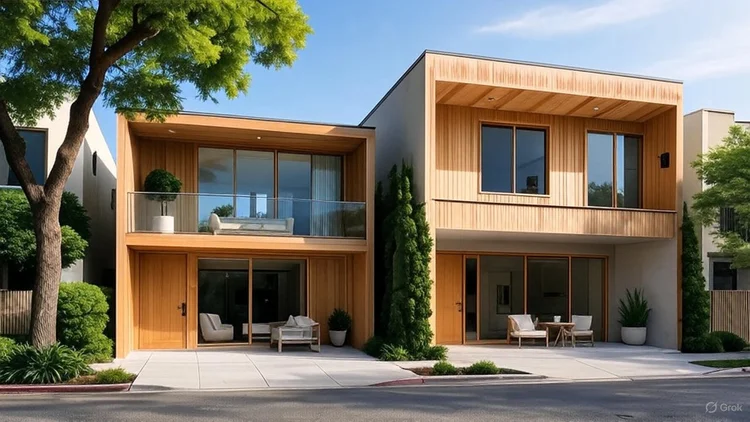
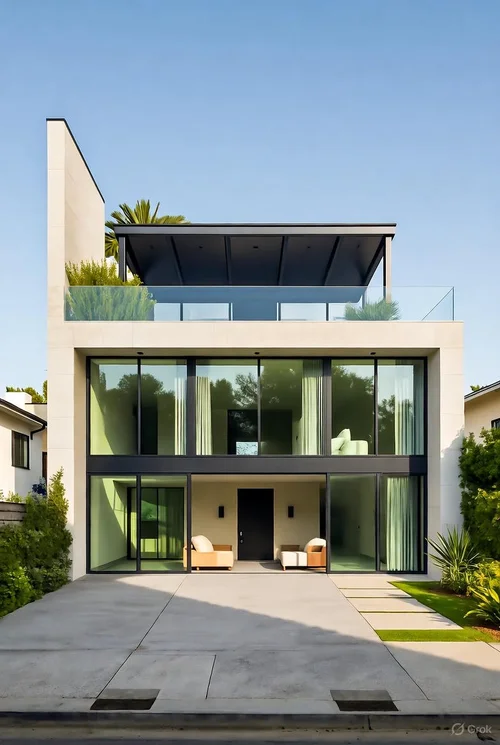
Landscape Plan: The California Coastal Meadow
A soft, naturalistic counterpoint to the clean architecture. A meadow of native bunchgrasses like Purple Needlegrass will create a textural carpet that moves with the coastal breeze, interwoven with drifts of native wildflowers like California Poppies and Lupines for seasonal color.
Phase-Based Cost Estimate
The following estimates are broken down by project phase into three tiers—Budget, Mid-Range, and Premium—to provide flexibility and transparency in decision-making.
| Phase | Budget Tier | Mid-Range Tier | Premium Tier |
|---|---|---|---|
| 1. Demolition | ~$8k - $12k | ~$12k - $18k | ~$18k - $25k+ |
| 2. Temp. Mobile Home | ~$55k - $65k | ~$75k - $85k | ~$100k+ |
| 3. Utility Hookups | ~$5k | ~$8k - $12k | ~$15k+ |
| 4. Permitting | ~$15k - $25k | ~$30k - $40k | ~$50k+ |
| 5. New Home Construction (~3,800 sq ft) | ~$1.2M - $1.5M | ~$1.8M - $2.4M | ~$3.0M - $4.0M+ |
| 6. Mobile Home Relocation | ~$5k - $7k | ~$9k - $15k | ~$30k+ |
| Total Estimated Project Cost | ~$1.29M - $1.61M | ~$1.93M - $2.57M | ~$3.21M - $4.22M+ |
Note: Costs are estimates for planning purposes and will vary based on final selections, market conditions, and contractor bids.
The Philosophy Behind the Tiers
The three-tiered cost structure is not about one architectural style being inherently more expensive than the other. Both the Japanese and Scandinavian concepts can be realized across a similar budget spectrum. The difference lies entirely in the execution—the specific choices of materials, the level of craftsmanship, the origin of the products, and the complexity of the details.
- Budget Tier: The goal is to achieve the aesthetic spirit of the design using widely available, cost-effective materials. This tier prioritizes the overall look and feel while leveraging standard construction methods and products from accessible suppliers.
- Mid-Range Tier: This tier focuses on authenticity and durability. It involves using the specific materials associated with each style (e.g., real Shou Sugi Ban, quality white oak) sourced from reputable, often regional, suppliers. It balances cost with a significant step up in quality and longevity.
- Premium Tier: This represents the purist, most exquisite execution of the design. It involves bespoke craftsmanship, sourcing rare or imported materials (like architectural-grade Japanese Hinoki wood or European window systems), and engaging specialist artisans for key features.
Cost Drivers: Japanese vs. Scandinavian Finishes
The significant cost variations emerge in the finishing stages. The table below illustrates how material and product choices for key features define the budget for each design concept.
| Feature | Budget Tier | Mid-Range Tier | Premium Tier |
|---|---|---|---|
| Exterior Cladding | Japanese: Pine siding with black stain to mimic Shou Sugi Ban. Scandinavian: Standard-grade cedar or fiber cement siding. | Japanese: Authentic Shou Sugi Ban(charred cypress) from a U.S. specialist like Nakamoto Forestry (approx.$11-$15/sq. ft.). Scandinavian: Clear-grade, vertical grain cedar or Douglas fir siding. | Japanese: Premium, heavily charred "alligator" finish Shou Sugi Ban or imported Japanese cypress. Scandinavian: Thermally modified light-toned wood or imported European woods. |
| Interior Flooring | Japanese: Stained concrete or dark-stained oak. Scandinavian: Engineered white oak from suppliers like Home Depot (approx. $3-$7/sq.ft.). | Japanese: Higher-quality dark hardwoods or slate tile. Scandinavian: Quality, wide-plank solid white oak from specialty suppliers (approx. $5-$9/sq.ft.). | Japanese: Imported Japanese teak or custom-cut large format stone. Scandinavian: Imported, extra-wide plank European white oak (can exceed $20/sq. ft.). |
| Windows & Doors | Standard-sized aluminum or vinyl-clad windows from major domestic brands for both styles. | High-performance wood or composite windows from premium domestic lines for both styles. | True European window systems (e.g., Zola, Westcoast Windows) for superior performance and minimalist profiles. Custom sliding glass walls. |
| Key Interior Feature | Japanese: Acrylic Japanese-style soaking tub (approx. $700-$2,000). Scandinavian: Standard built-in gas fireplace insert. | Japanese: Redwood *ofuro* tub from a California maker (approx. $3,700-$6,000). Custom *shoji*-style screens from a local woodworker. Scandinavian: High-quality minimalist ethanol fireplace from a brand like Planika. | Japanese: Custom, imported*Hinoki* wood *ofuro* (can exceed $12,000-$28,000). Scandinavian: Designer fireplace integrated into a custom stone or plaster feature wall. |
| Fixtures & Fittings | Quality fixtures from brands like Kohler or Delta for both styles. | Mid-to-high-end designer lines from brands like Brizo for both styles. | Top-tier European designer fixtures known for minimalist aesthetics, such as Vola or Dornbracht, where a single faucet can exceed $1,500. |
Recommended Architects & Vendors
The success of this project depends on a team that understands the vision. Below are recommendations for firms and integrators with expertise in modern, high-performance residential design.
Architects for Japanese-Influenced Design
- OWIU Design - A Los Angeles firm known for infusing Japanese ryokan-inspired minimalism into modern homes.
- EYRC Architects (Takashi Yanai) - A local expert with a contemplative relationship to landscape who often integrates traditional Japanese elements into contemporary California homes.
- East Wind, Inc. - A design-build firm specializing in Japanese architecture adaptations, ideal for consulting on authentic details.
Architects for Scandinavian-Influenced Design
- Electric Bowery - A Venice-based firm that has explicitly designed homes inspired by mid-century Scandinavian principles, focusing on open plans and indoor-outdoor flow.
- Marmol Radziner - An LA firm known for mid-century modern work that overlaps significantly with Scandinavian simplicity and clean lines.
- Norm Architects (Copenhagen) - An international firm to draw inspiration from, epitomizing Danish minimalism and human-centric, warm modern spaces.
Luxury Technology Integrators
- AudioVisions - A leading LA company specializing in luxury home automation and AV, with an experience center in Westlake Village.
- DSI Luxury Technology - Experts in creating a seamless balance of luxury and functionality with platforms like Crestron and Savant.
- Audio Command Systems - A premier provider with over 40 years of experience integrating sophisticated technology into luxury residences.
Permit Expediting & Entitlement Consultants
- Burnham Nationwide - A premier specialist in building permit expediting for the Greater Los Angeles Area with extensive experience in large-scale developments.
- Crest Real Estate - Experts in navigating municipal codes in Los Angeles, Santa Monica, and Malibu, with a focus on entitlements and efficient plan check procedures.
- Los Angeles Design Group - Offers hands-on permit processing services, including drafting plans and walking them through various Los Angeles area building departments.
- Permit Place - A national firm with deep experience in local building codes, offering start-to-finish permit management for commercial and residential projects.
Project Dashboard: Venice Residence
Venice, California
Adapted Architectural Concept
Central Atrium & Water Garden
The original "courtyard" concept will be transformed into an expansive, open-air atrium that serves as the home's spiritual and architectural heart. Inspired by Picture A, this space will feature a tranquil, reflective water feature with natural stone borders. Floor-to-ceiling glass walls will retract, dissolving the boundary between the living spaces and the garden. The perimeter will be defined by high walls covered in lush ivy, ensuring complete privacy while creating a "borrowed scenery" effect with the sky and surrounding treetops.


Rooftop Study & Oasis
The rooftop level will be a multi-functional retreat, executing the vision from the provided drawings and Picture B. It will feature:
- Pergola & Greenery: A slatted wood pergola, echoing the one in the student's sketch, will support flowering vines like bougainvillea, creating dappled light and shade.
- Jacuzzi Spa: A built-in jacuzzi will be integrated into the wooden deck, offering a space for relaxation with city or ocean views.
- Enclosed Study/Lounge: A glass-enclosed structure with a sleek, dark metal frame will serve as a home office or all-weather lounge, providing a panoramic vantage point while being protected from the elements.
Project Summary
This proposal outlines a path forward to realize the compelling design vision presented in the student architectural drawings for a new single-family residence in Venice, California. While the initial concept is aesthetically powerful, this plan addresses the practical and legal steps required to bring it to life, transforming it into a fully engineered, permit-ready, and buildable project.
The core challenge is twofold: refining the design for structural practicality and navigating the legal requirement of engaging a California-licensed Architect of Record. This dashboard provides a comprehensive framework to achieve this, outlining the adapted architectural concept, detailed cost projections, a directory of vetted local professionals, and a realistic construction timeline.
The guiding vision is to create a serene, Japanese-inspired sanctuary that merges a sleek "girder and panel" structure with the warmth of natural materials, creating a seamless connection between the interior and the curated natural environment of the property.
Construction Cost Analysis
This estimate is based on a projected 4,800 sq ft new build in Venice, CA, a high-cost construction area. The three tiers—Standard, Premium, and Luxe—reflect variations in material quality, fixture selection, and the complexity of custom finishes, not fundamental changes to the architectural design. All costs are preliminary and subject to change based on final engineering, material selections, and market conditions.
Standard Tier Total
$0M
Premium Tier Total
$0M
Luxe Tier Total
$0M
Professional & Vendor Directory
A project of this caliber requires a team of highly skilled and licensed professionals. This directory provides a starting point for assembling that team, with recommendations for firms experienced in high-end, modern residential construction in the Los Angeles area. Note: This is a sample list for planning purposes; client must perform their own due diligence and vetting.
Project Timeline
This Gantt chart outlines a realistic timeline for a custom residential build of this scale in California. The total estimated duration is approximately 26-32 months from architect selection to final handover. The pre-construction phase is extensive due to the complexities of design development, engineering, and the permitting process with the City of Los Angeles and potentially the California Coastal Commission.
Projected Timeline (28-Month Sequence)
Project Dashboard: Venice Residence
Feasibility Study: Prefabricated Concept < $2M
Revised Project Vision
This revised proposal directly addresses the client's new budgetary target of under $2 million by pivoting from a traditional, site-built construction method to a high-end prefabricated approach. The guiding vision remains the same: to create a serene, Japanese-inspired sanctuary that merges a sleek "girder and panel" aesthetic with natural warmth.
By leveraging off-site manufacturing for the home's structural components, we can significantly reduce on-site labor costs, shorten the construction timeline, and achieve a higher level of precision and quality control. This strategy allows us to preserve the ambitious design—including the central atrium and rooftop oasis—while making the project financially viable.
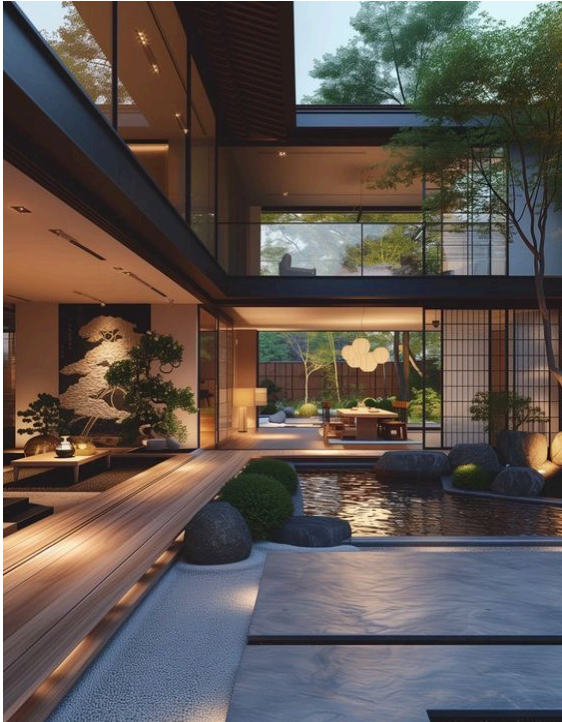

This updated dashboard outlines the adapted architectural concept using prefab systems, a revised cost analysis reflecting this new methodology, and an expanded directory of specialized professionals who can execute this vision.
Visualizing the Prefab Concept
The following renderings illustrate how prefabricated systems can achieve the desired high-end aesthetic without compromise. The focus is on using panelized wall systems, Cross-Laminated Timber (CLT), and pre-finished modules to create a structure that is both beautiful and efficient to assemble.
Rendering 1: The Assembly Process
This rendering showcases the efficiency of the prefab method. A large, pre-clad wall panel, complete with an integrated window system and finished Shou Sugi Ban-style siding, is craned into place. This visual emphasizes that major components arrive on-site already finished, dramatically reducing on-site construction time and exposure to the elements. The precision of the panel alignment highlights the quality achievable with factory fabrication.

Rendering 2: The Seamless Interior

This interior view counters any notion of "prefab" looking generic. It depicts the main living space flowing into the central atrium, with floor-to-ceiling glass. The ceiling is made of exposed Cross-Laminated Timber (CLT) panels, lending a rich, natural warmth that complements the Japanese aesthetic. The clean lines and flawless junctions between structural elements showcase a level of craftsmanship that is a hallmark of high-end prefabrication.
Revised Cost Analysis for Prefab Construction
This budget targets a total project cost under $2 million. The primary savings are achieved by shifting a significant portion of labor from the high-cost LA market to an efficient factory environment and by shortening the overall construction timeline, which reduces financing costs.
| Phase | Estimated Cost | Notes |
|---|---|---|
| 1. Design, Engineering & Permitting | $185,000 | Includes architectural adaptation for prefab systems and structural engineering. |
| 2. Prefabrication Contract (Off-Site) | $850,000 | Core cost. Includes all structural panels/modules, windows, doors, and exterior cladding installed in-factory. |
| 3. Site Work & Foundation | $220,000 | Demolition, grading, and pouring a high-tolerance foundation required for prefab assembly. |
| 4. Module Transport & Crane Rental | $95,000 | Logistics of moving components from factory to site and crane services for assembly. |
| 5. On-Site Assembly & Finishes | $450,000 | Labor for module stitching, MEP connections, drywall, flooring, cabinetry, and fixtures. |
| 6. Landscaping & Site Systems | $150,000 | Includes atrium water feature, rooftop deck/spa, and basic landscaping. |
| Total Estimated Project Cost | $1,950,000 | Includes a 5% contingency within line items. |
Expanded Prefab Specialist Directory
To execute this vision, a team with specific expertise in high-end, modern prefabrication is essential. The following is a researched list of recommended firms and suppliers across the specified regions (CA, AZ, NV, OR, Northern Mexico).
Architects & Designers (CA, AZ, NV, OR)
Connect Homes
Location: Los Angeles, CA
Specialty: Steel-frame modular systems with a distinct mid-century modern aesthetic. They act as both architect and fabricator.Contact: connect-homes.com
Method Homes
Location: Seattle, WA (Serves all of CA/OR/NV)
Specialty: Highly custom, sustainable modular and prefab homes. Experience with complex, architect-driven projects.Contact: methodhomes.net
The Ranch Mine
Location: Phoenix, AZ
Specialty: Award-winning firm focused on modernism in a desert context; their material sensibility would translate well to Venice.Contact: theranchmine.com
HONE Modular
Location: Portland, OR
Specialty: Architect-led firm focusing on sustainable, modern designs using mass plywood panels and efficient modular construction.Contact: honemodular.com
Blue Heron
Location: Las Vegas, NV
Specialty: High-end design-build firm known for its "Vegas Modern" style, with extensive experience in custom luxury homes that could incorporate prefab elements.Contact: blueheron.com
Ideabox
Location: Salem, OR
Specialty: Focus on compact, modern, and energy-efficient prefab homes with a strong design sensibility.Contact: ideabox.us
General Contractors with Prefab Experience (CA, AZ, NV, OR)
Plant Prefab
Location: Rialto, CA
Specialty: A leader in custom, high-end architectural prefabrication. They frequently collaborate with renowned architects.Contact: plantprefab.com
Marmol Radziner
Location: Los Angeles, CA
Specialty: A design-build firm with its own prefab manufacturing. They are vertically integrated and specialize in high-end modernism.Contact: marmol-radziner.com
The Build Group
Location: Phoenix, AZ
Specialty: High-end custom home builder with experience integrating complex prefab components and systems into their projects.Contact: thebuildgroup.com
DC Structures
Location: Nationwide (Strong presence in OR/NV)
Specialty: Supplies pre-engineered building kits and has a network of builders experienced with their systems.Contact: dcstructures.com
Cutting Edge Custom Homes
Location: Scottsdale, AZ
Specialty: Luxury home builder known for technically complex projects and integrating innovative building systems.Contact: cuttingedgecustomhomes.com
Performance Contracting, Inc. (PCI)
Location: Las Vegas, NV & multiple CA offices
Specialty: Large specialty contractor with the logistical capability to handle complex installations and assembly of prefab systems.Contact: performancecontracting.com
City Expeditors & Permitting (Los Angeles)
Permit Advisors
Location: Los Angeles, CA
Specialty: Navigating complex permitting with LADBS, specializing in residential and commercial projects.Contact: permitadvisors.com
LA Expediting Services
Location: Los Angeles, CA
Specialty: Local expertise in LA's building codes, zoning, and departmental procedures for a smoother process.Contact: laexpediting.com
Burnham Nationwide
Location: Los Angeles, CA
Specialty: A premier national specialist in building permit expediting with a strong presence in large-scale LA developments.Contact: burnhamnationwide.com
Crest Real Estate
Location: Los Angeles, CA
Specialty: Offers a full suite of services from due diligence to entitlements and permit expediting, rooted in LA.Contact: crestrealestate.com
Prefab Component Manufacturers & Suppliers
Northern Mexico (USMCA Tax-Advantaged)
Artiguelu Ventanas
Location: Tijuana, Mexico
Specialty: Manufacturer of architectural aluminum window and door systems for the US market.Contact: artiguelu.com
Interceramic
Location: Chihuahua, Mexico (US Distribution)
Specialty: High-quality porcelain/ceramic tiles and natural stone products for high-end finishes.Contact: interceramicusa.com
Grupo Lamosa
Location: Monterrey, Mexico
Specialty: One of Mexico's largest producers of wall/floor tiles and adhesives, with extensive export experience.Contact: grupolamosa.com
Coast Aluminum
Location: Tijuana, Mexico
Specialty: Supplier of specialty metals including custom-profile aluminum and steel for architectural applications.Contact: coastaluminum.com
Time Ceramics México
Location: Monterrey, Mexico
Specialty: New, state-of-the-art manufacturer of high-quality porcelain tiles for the Americas.Contact: timeceramics.com.mx
Grupo Chihuahua
Location: Chihuahua, Mexico
Specialty: Supplier of engineered wood products and custom architectural millwork for interior paneling and cabinetry.Contact: grupochihuahua.com
U.S. West Coast
Entekra
Location: Ripon, CA
Specialty: Fully Integrated Off-Site Solution (FIOSS) provider, specializing in high-precision wood framing assemblies.Contact: entekra.com
Kalesnikoff Mass Timber
Location: British Columbia, Canada (Major supplier to West Coast USA)
Specialty: Producer of high-quality Cross-Laminated Timber (CLT) panels for floors, walls, and roofs.Contact: kalesnikoff.com
Vitrocsa / Goldbrecht
Location: Culver City, CA
Specialty: Supplier of minimalist, high-performance window and sliding glass door systems ideal for the desired aesthetic.Contact: goldbrecht.com
Enercept SIPs
Location: Manufacturing network serving NV/AZ
Specialty: Long-time manufacturer of high-performance Structural Insulated Panels for walls, roofs, and floors.Contact: enercept.com
Milgard Windows & Doors
Location: Factories in CA, OR
Specialty: Major manufacturer of a wide range of high-quality windows and doors, including fiberglass and aluminum options.Contact: milgard.com
Arizona Structural Laminators
Location: Eagar, AZ
Specialty: Manufacturer of high-quality glulam beams, headers, and columns for structural applications.Contact: azglulam.com
MEP Project Dashboard: Bali Villa
A Proposal for a Private Estate, Villa Plumbing Installation
Project Summary

This proposal outlines a comprehensive plan for the supply and installation of the complete Mechanical, Electrical, and Plumbing (MEP) system, with a primary focus on the plumbing, for a new villa residence in Tabanan, Bali. The project is based on the technical drawings provided, which detail a sophisticated system for clean water distribution, wastewater management, and greywater recycling.
The objective is to source the most cost-effective, high-quality materials and professional services available in Bali and other Indonesian commercial hubs like Jakarta and Surabaya. This dashboard provides a detailed breakdown of the system, a cost analysis with tiered options, a directory of vetted local and national vendors, and a realistic project timeline for successful execution.
The system is designed for sustainability and efficiency, incorporating a septic tank, a ground tank for primary water storage, and an organic water tank for recycling and use in garden irrigation, reflecting a modern approach to residential water management in Bali.
Plumbing System Overview
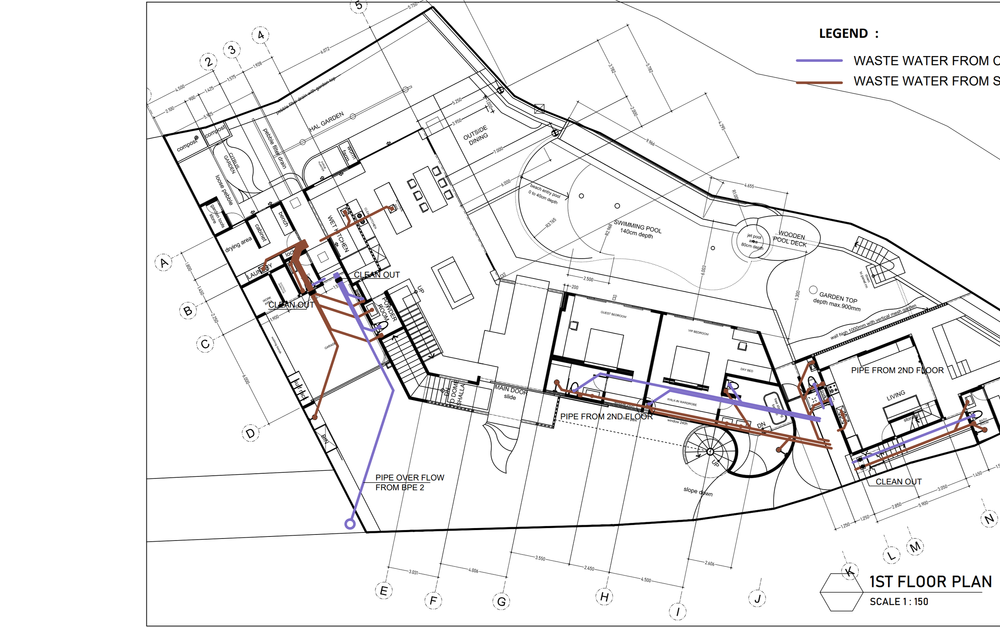
Clean & Organic Water Distribution
The system is designed around two core loops. The primary clean water system draws from a large underground ground tank (48,384 L), which is then pumped and filtered for distribution to all fixtures in the villa—from the basement to the 2nd floor. A secondary "ring system" supplies recycled organic water from a separate tank (18,020 L) specifically for irrigation, including the rooftop garden, promoting water conservation.
- Main Source: Large-capacity ground tank.
- Piping: Ring system ensures consistent pressure.
- Conservation: Dedicated organic water line for non-potable uses.
Wastewater & Septic System
All wastewater from toilets (blackwater) and sinks/showers (greywater) is directed to a central septic tank. The plans indicate an advanced system where the overflow from the septic tank is not discarded but channeled through a gravel garden filter and then into the Organic Water Tank. This treated water is then repurposed for irrigation, completing the sustainable water cycle of the villa. This approach is environmentally friendly and reduces reliance on fresh water sources.
Plumbing Installation Cost Analysis
This estimate covers all materials, labor, and logistics for the plumbing system installation as per the provided drawings. The tiers (Standard, Premium) reflect variations in material quality (e.g., local vs. imported brands for pipes, pumps, and fixtures). All costs are in Indonesian Rupiah (IDR) and are preliminary estimates subject to final vendor quotations and material selection.
Standard Tier Total
Rp 0
Premium Tier Total
Rp 0
Professional & Vendor Directory (Bali & Java)
This directory provides a starting point for sourcing materials and hiring skilled professionals for the MEP installation. It includes vendors in Bali for convenience and larger suppliers in Jakarta/Surabaya for potentially better pricing on bulk materials, factoring in logistics. Note: Client must perform their own due diligence.

Project Timeline
This Gantt chart outlines a projected timeline for the plumbing installation project. The total estimated duration is approximately 6-9 weeks, from material procurement to final system testing and handover. This timeline assumes that the main building structure is already in place.
Projected Timeline (8-Week Sequence)
Project Dashboard: Sam Villa
An Optimized Feasibility & Cost Analysis
Project Summary
This proposal outlines a full feasibility and cost analysis for the **Sam Villa** project, a new-build, three-bedroom residence located in Padonan, Canggu.
Based on the initial client call, this dashboard serves as a comprehensive project management tool. It translates the completed architectural and engineering plans from G.A Studio and CV. Bali Rancang Mandala into a practical framework. This includes a tiered cost estimate based on local market data, a directory of the confirmed project team, and a realistic project timeline.
The core vision is to execute the client's "dreamed up" design—a modern tropical villa—while navigating the specific construction environment in Bali. This report emphasizes a structured process, from the initial tender phase through to final handover and the client-managed defects liability period.
Architectural Concept
Modern Tropical Villa
The design, as visualized in the 3D renderings, is a clean, modern tropical residence. The aesthetic is defined by a crisp white exterior, large floor-to-ceiling glass sliders, and warm wood-look cladding (Conwood specified in plans). An arched entryway provides a distinct Mediterranean accent, leading into a private garden.
The ground floor is designed for seamless indoor-outdoor living, with the living and dining areas opening directly onto the terrace and garden. The kidney-shaped swimming pool serves as the centerpiece of the outdoor space.


Private Garden & Pool
The property layout maximizes privacy and creates a tranquil sanctuary. The program includes:
- Swimming Pool: A free-form pool with surrounding terrace, positioned for easy access from the living room.
- Lush Landscaping: The garden space provides a green buffer from surrounding properties.
- Outdoor Shower: An enclosed outdoor shower with stone and terrazzo finishes, as detailed in the renderings, adds a luxury, tropical feature.
- Second-Floor Balcony: The second-floor bedrooms feature a shared balcony overlooking the garden and pool area.
Optimized Construction Cost Analysis
This optimized estimate is
based on a projected Gross Floor Area (GFA) of **185 m² (1,990 sq ft)**. Costs are
derived from 2024-2025 market data for the Padonan/Canggu area and analysis of alternative vendors.
The three tiers reflect variations in material quality, fixture
selection, and finish
complexity. All costs are preliminary estimates, converted at **1 USD = 16,679 IDR**, and
exclude land, furnishing, and PPN (VAT).
Optimized Standard
$0k
0B IDR
Optimized Premium
$0k
0B IDR
Luxe Tier
$0k
0B IDR
Expanded Professional & Vendor Directory
This expanded directory provides a list of vetted local and national professionals, contractors, and suppliers to support a competitive and high-quality tender process.
Updated Project Timeline (Dec 2025 Start)
Fully corrected, non-overlapping, phase-aligned project timeline for a December 1, 2025 construction start. Timeline spans 18 months + a 3-month Defects Liability Period (DLP).
Corrected Gantt Timeline
(Dec–Jan)
(Feb)
(Mar–Apr)
(May–Jun)
(Jul–Aug)
(Sep–Oct)
(Nov–Dec)
(Jan–Feb)
(Mar–May)
